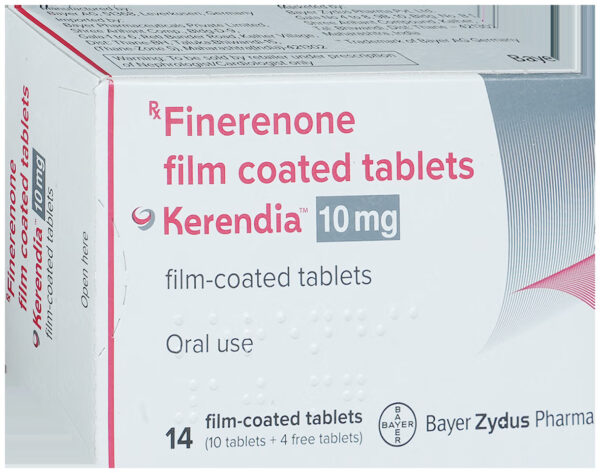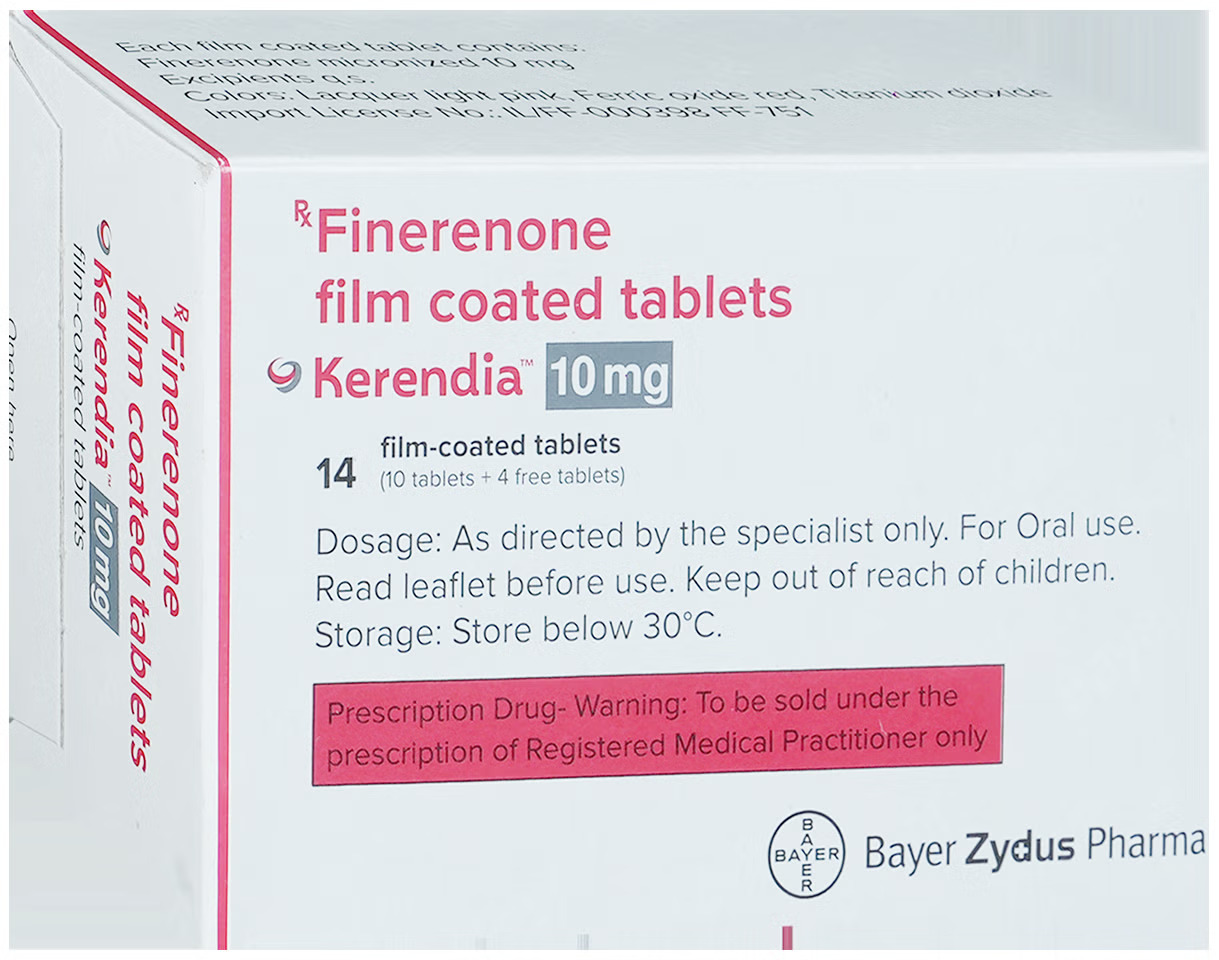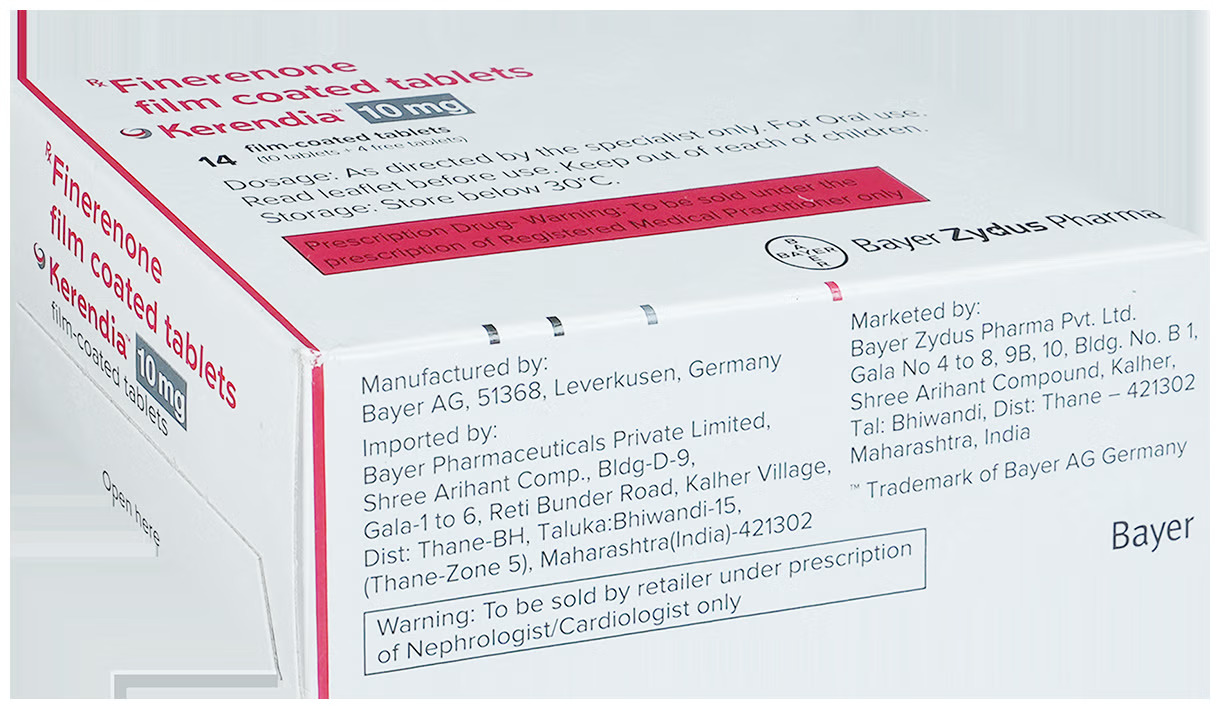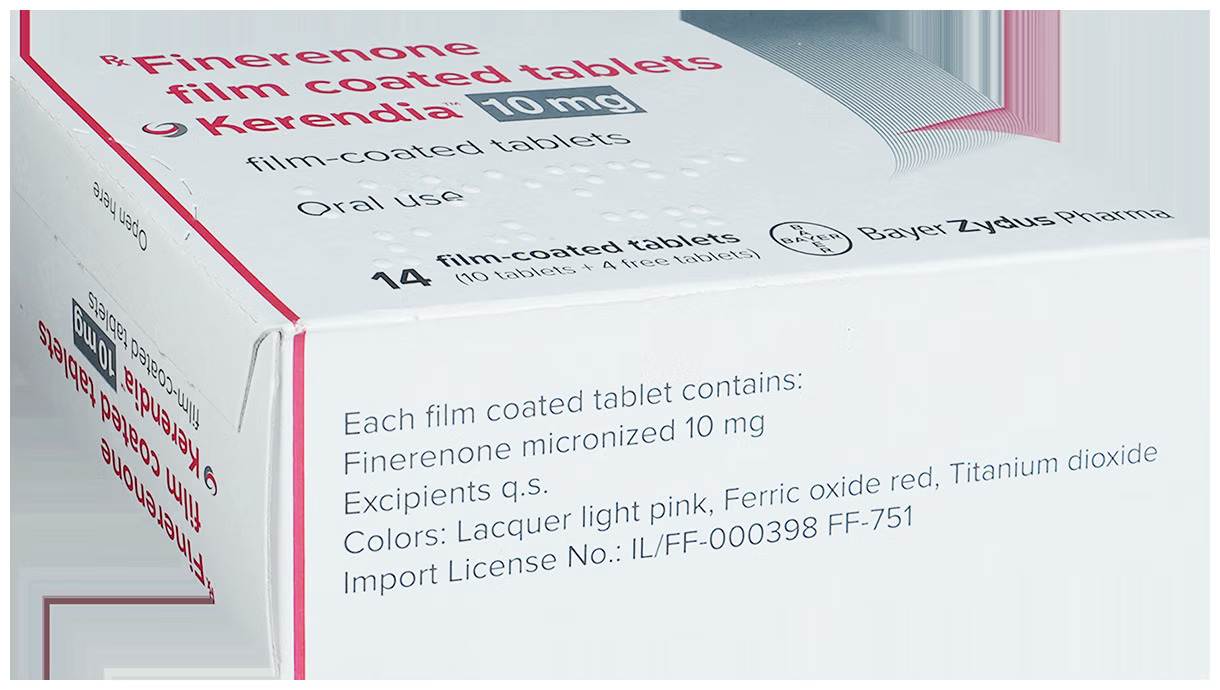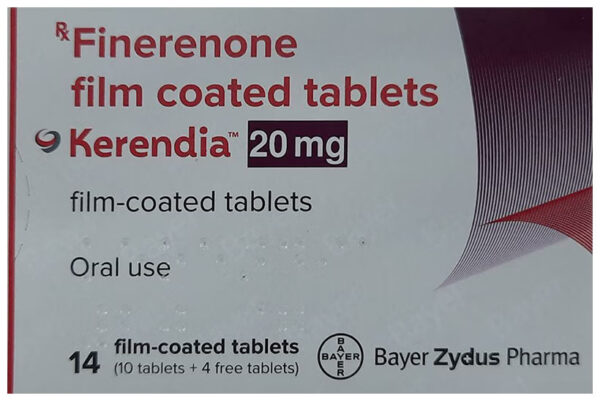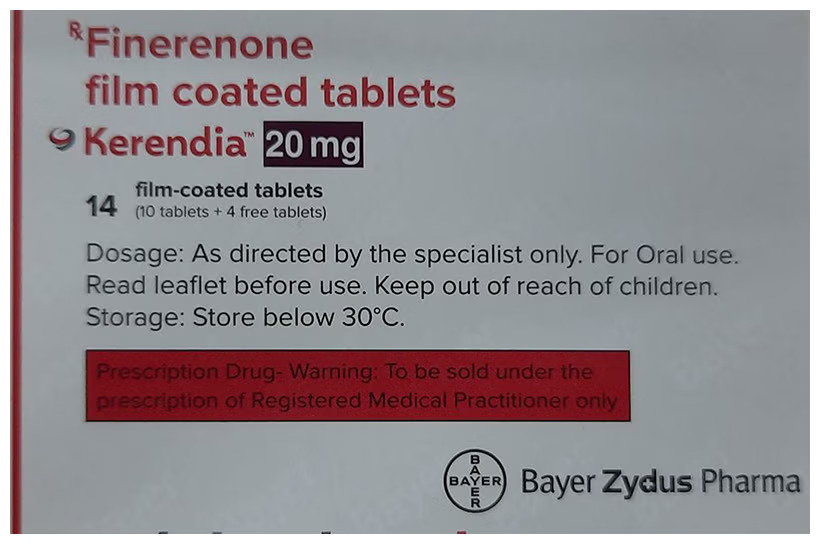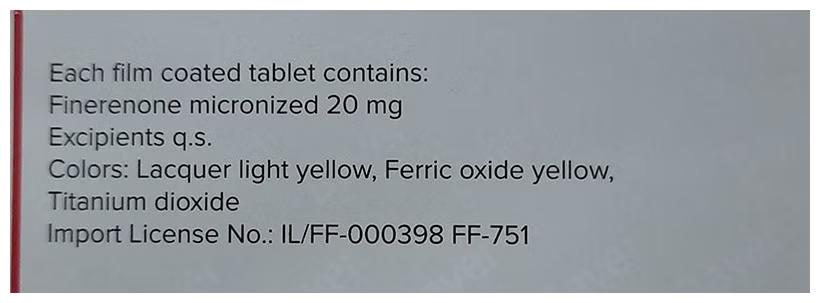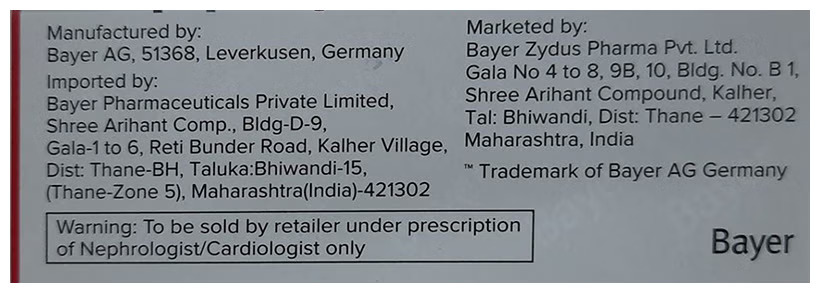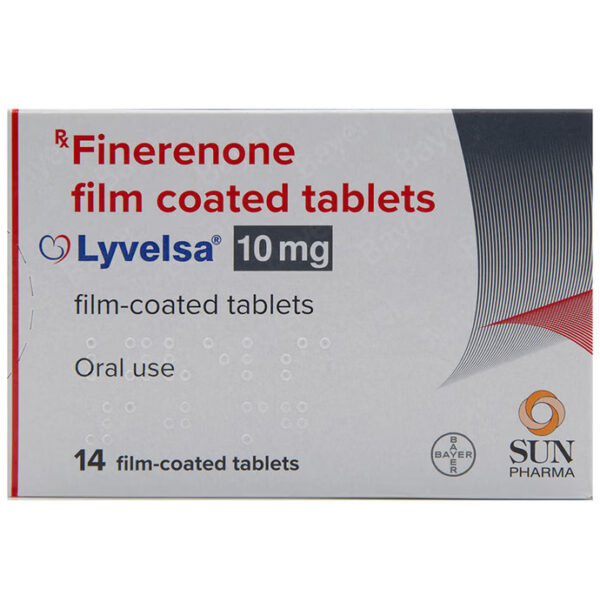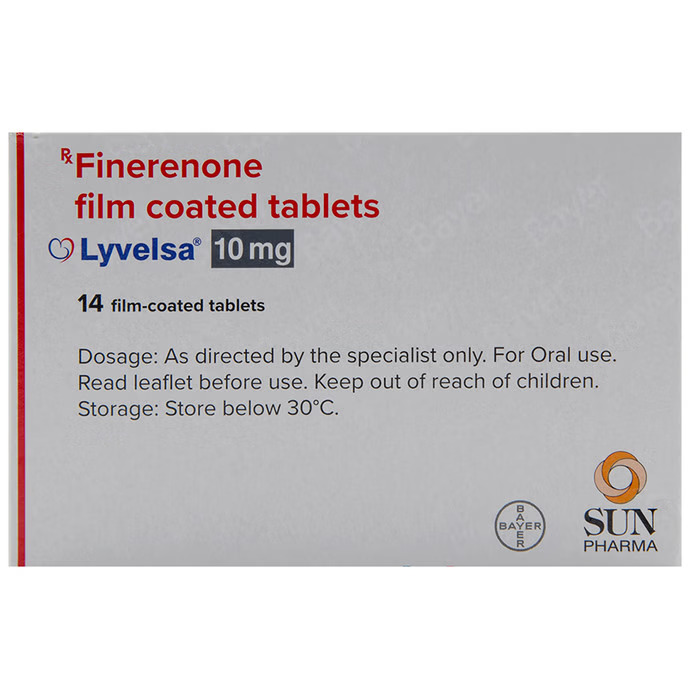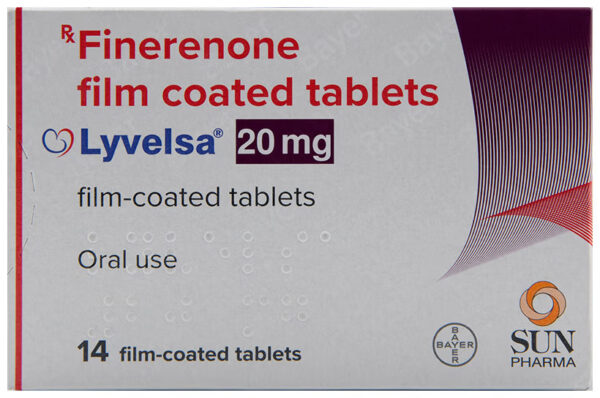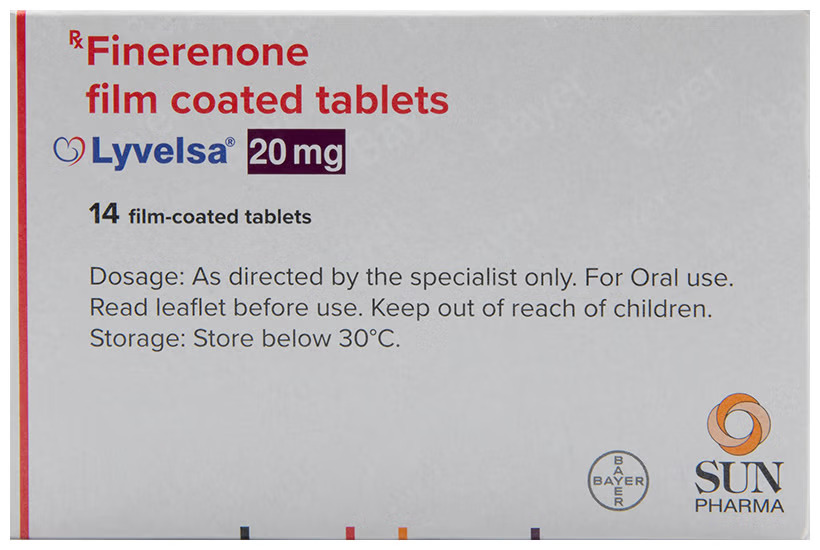Kerendia (Finerenone) Tablet
Branded
Generic
Finerenone (Generic Equivalent to Kerendia)
Finerenone (Generic Equivalent to Kerendia)
Kerendia Tablet is used by people with type 2 diabetes and kidney disease to lower the risk of dialysis, death from heart disease, heart attacks, and the need to go to the hospital for heart failure. It works by blocking a chemical (aldosterone) in your body which in turn lowers the amount of sodium and water the body retains.
Uses Of Kerendia Tablet
- To Treat Kidney Disease And Type 2 Diabetes
Benefits Of Kerendia Tablet
In Treat Kidney Disease And Type 2 Diabetes
Kerendia is a medication used to reduce the risk of kidney function decline, kidney failure, cardiovascular death, non-fatal heart attacks, and hospitalization for heart failure in adults with chronic kidney disease associated with type 2 diabetes. Kerendia is a non-steroidal mineralocorticoid receptor antagonist (MRA).
Side Effects Of Kerendia Tablet
Most side effects do not require any medical attention and disappear as your body adjusts to the medicine. Consult your doctor if they persist or if you’re worried about them
Common side effects of Kerendia
- Gynaecomastia
- Impotence
- Low libido
- Hyperkalemia (high levels of potassium)
- Hypotension (low blood pressure)
- Hyponatremia (low levels of sodium)
How To Use Kerendia Tablet
Take this medication by mouth with or without food as directed by your doctor, usually once daily.
How Kerendia Tablet Works
Kerendia tablet has less relative affinity to other steroid hormone receptors than currently available aldosterone antagonists such as eplerenone and spironolactone,
Kerendia tablet blocks mineralocorticoid receptors, which makes it a potassium-sparing diuretic.
Disclaimer :The information provided on the website is intended to facilitate awareness about healthcare products and medical conditions generally but it is not a substitute for professional medical attention or advice. You should always speak with a qualified healthcare practitioner before taking any prescription or non-prescription drug. |
| Product Type--Salt | Brands–Kerendia, Generic–Finerenone (Generic Equivalent to Kerendia) |
|---|---|
| tag--Manufacturer | Lyvelsa 10mg–Sun Pharmaceutical, Lyvelsa 10mg–Sun Pharmaceutical, Lyvelsa 10mg–Sun Pharmaceutical, Lyvelsa 10mg–Sun Pharmaceutical, Branded–Bayer Zydus Pharma, Branded–Bayer Zydus Pharma, Branded–Bayer Zydus Pharma, Branded–Bayer Zydus Pharma, Lyvelsa 20mg–Sun Pharmaceutical, Lyvelsa 20mg–Sun Pharmaceutical, Lyvelsa 20mg–Sun Pharmaceutical, Lyvelsa 20mg–Sun Pharmaceutical, Branded–Bayer Zydus Pharma, Branded–Bayer Zydus Pharma, Branded–Bayer Zydus Pharma, Branded–Bayer Zydus Pharma |
| Power--Pack Size | 10mg–28 Tablets, 10mg–56 Tablets, 10mg–84 Tablets, 10mg–168 Tablets, 10mg–28 Tablets, 10mg–56 Tablets, 10mg–84 Tablets, 10mg–168 Tablets, 20mg–28 Tablets, 20mg–56 Tablets, 20mg–84 Tablets, 20mg–168 Tablets, 20mg–28 Tablets, 20mg–56 Tablets, 20mg–84 Tablets, 20mg–168 Tablets |

